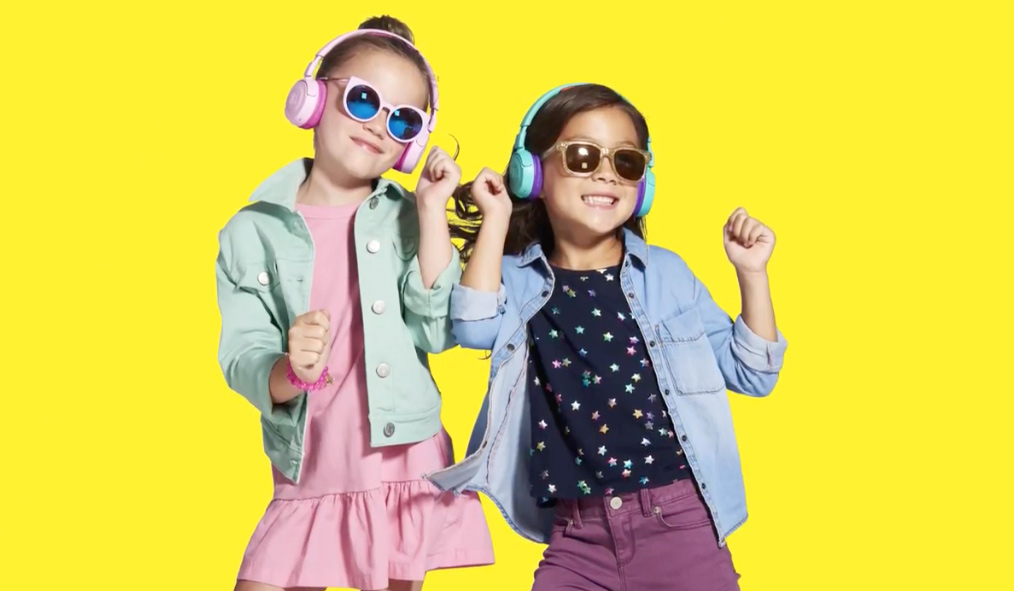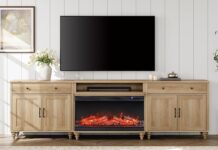 Your kids live in a rich, multimedia world full of sound. But sometimes, you don’t want to enjoy the same sound that they are immersed in. Or they might need to focus on their school homework and not your rich assortment of dad jokes. That is why outfitting your kids with the right set of headphones is important. But what type should you get for your child? Here’s some advice on how to choose headphones for kids.
Your kids live in a rich, multimedia world full of sound. But sometimes, you don’t want to enjoy the same sound that they are immersed in. Or they might need to focus on their school homework and not your rich assortment of dad jokes. That is why outfitting your kids with the right set of headphones is important. But what type should you get for your child? Here’s some advice on how to choose headphones for kids.
Talking is the first step
It may seem obvious, but start with a conversation between you and your child. They will have preferences and dislikes that you need to consider when shopping. And I know it can be tricky to get a firm answer from your kid. Sometimes it feels like their tastes change every 20 minutes. So, be patient and flexible. The conversation with a 7-year-old is much different than with a 13-year-old, so make sure you have a separate discussion with each child in your household. And will they tolerate having the same headphones as their sibling, or do you need unique headphones for each child?
Safety
 Your child’s hearing needs to be protected, even from the kids themselves. I’ve seen my own kid crank up the volume to frightening levels and sit there with the sound assaulting his ears. And then I added to the noise by shouting at him to turn the volume down. Oops.
Your child’s hearing needs to be protected, even from the kids themselves. I’ve seen my own kid crank up the volume to frightening levels and sit there with the sound assaulting his ears. And then I added to the noise by shouting at him to turn the volume down. Oops.
Kid’s headphones have a built-in volume limit for protection. They can’t turn the volume up to a level high enough to hurt their ears. This is a very good feature for any younger kids needing headphones.
Wireless vs. wired
 Wires keep you tethered to your device. You won’t notice that as much if the device is your phone. But if they’re plugged into their laptop, the movement restriction caused by wired headphones might encourage bad posture habits and make your child less comfortable. However, wired headphones are less expensive and don’t get misplaced as often, since they are plugged into the device, so are always available for use.
Wires keep you tethered to your device. You won’t notice that as much if the device is your phone. But if they’re plugged into their laptop, the movement restriction caused by wired headphones might encourage bad posture habits and make your child less comfortable. However, wired headphones are less expensive and don’t get misplaced as often, since they are plugged into the device, so are always available for use.
Wireless headphones will give your kids more freedom of movement. And that is great! However, with wireless headphones you are adding the need to recharge batteries into the school preparation routine. I don’t know about your child, but mine does not put battery charging at the top of his priority to-do list. You’ll need to be prepared to remind your child to recharge, or get a backup pair of wired headphones when their wireless ones are out of juice.
I have to make an important distinction here, between wireless and truly wireless. Regular wireless headphones have the two ear pieces connected by a cable. The cable functions as an antenna to strengthen communication between the headphones and the device, and the cable has some of the control components within it. So it is wireless in respect to the connection between headphone and device, but wired in the connection between ear pieces.
 In contrast, truly wireless headphones are exactly that. This eliminates any wire tangles and discomfort from a cable resting at your neck.
In contrast, truly wireless headphones are exactly that. This eliminates any wire tangles and discomfort from a cable resting at your neck.
However, truly wireless headphones are more expensive. It’s a lot of tech in a very small space, so naturally it costs more. This is definitely only an option for older, very responsible kids.
Over-ear vs. on-ear vs. in-ear
 This is a significant variable when you choose headphones for kids. The differences are pretty simple.
This is a significant variable when you choose headphones for kids. The differences are pretty simple.
- In-ear means ear buds that go inside the ear canal
- On-ear cover the ear with ear cups
- Over-ear cover more area around and over the ear
If your kid hates having something in their ears, then in-ear headphones are eliminated from the discussion. And if your kid is like me and has glasses, the sensation of on-ear headphones pressing their ears against the arms of their glasses will eventually ache. This isn’t a certainty, however. Some folks who wear glasses also love on-ear headphones. I’m just not one of them. Over-ear headphones are the biggest ones, so they can cram more technology for better sound quality.
Noise cancelling vs. noise isolation
I want to be clear about noise cancelling headphones: they’re not magic. Headphones with active noise cancellation use software to filter out noise from the around the room, and they can do a pretty good job. But, it’s not complete silence. In reality, there’s always going to be some sound that gets through, even if it’s incredibly muffled. If you expect any headphone to completely block out all surrounding noise, you are going to be disappointed, though some will get very close. On the other hand, noise cancellation is a great feature for a learning environment with multiple students and parents trying to work.
Noise isolation is the physical sound barrier provided by the headphones. It’s pretty straightforward: you add more padding around the ear or make the ear bud seal more precisely in the ear canal, and you block more external sound. The benefit is that noise isolation is active when the headphones are turned off. The drawback is ironically the same as the benefit. Your noise cancellation will continue to work even if you pause the music, so you have to remove the headphones to hear external sound clearly.
Sport headphones for a range of activities
 These headphones are designed to be used in adverse conditions. So, if your kid is a budding athlete or an outdoors enthusiast, sport headphones are the right choice. They are sweat- and dirt- resistant, so your athlete can focus on training. There are also some models that are waterproof. Can you imagine swimming with headphones? It boggles my mind, but it is possible.
These headphones are designed to be used in adverse conditions. So, if your kid is a budding athlete or an outdoors enthusiast, sport headphones are the right choice. They are sweat- and dirt- resistant, so your athlete can focus on training. There are also some models that are waterproof. Can you imagine swimming with headphones? It boggles my mind, but it is possible.
Price considerations when buying headphones
I am a cheapskate. I really dislike spending money on something that gets broken or lost within a few weeks. And kids are great at losing things or breaking them. It depends on their age, of course, but also on their awareness and common sense. I once discovered my 12 year old digging out a protective barrier from his pair of earphones, and I was not pleased. He also did it with a similar pair of his mom’s headphones. She was very much not pleased with that. So think about the cost to replace the headphones when you’re shopping. Honestly, buying a multi-pack of cheap earbuds can be a cost-effective solution. You can still wear out a pair of wired headphones through regular usage, so having another pair on hand to swap in makes sense.
How to choose headphones for kids
I know this is a lot to consider, and every kid is different. But you’ll find the process is much easier if you figure out your priorities beforehand. It is perfectly okay to make affordability the most important feature. It’s also fine to invest a little bit of money in a good pair of headphones if your kid will benefit from it. You know your budget and what makes sense for your household. Overall, use your parental superpower of flexibility to adapt, and you’ll get the right headphones.
You might also be feeling a little overwhelmed by the return of the school year and for all the items your kids will need to see them through. That’s okay! We’re all a little overwhelmed right now. You just need to take your time and relax. You can read the great back to school advice from the Best Buy bloggers over at the back to school section to help you pick out the right gear for you and have some fun with the process.



